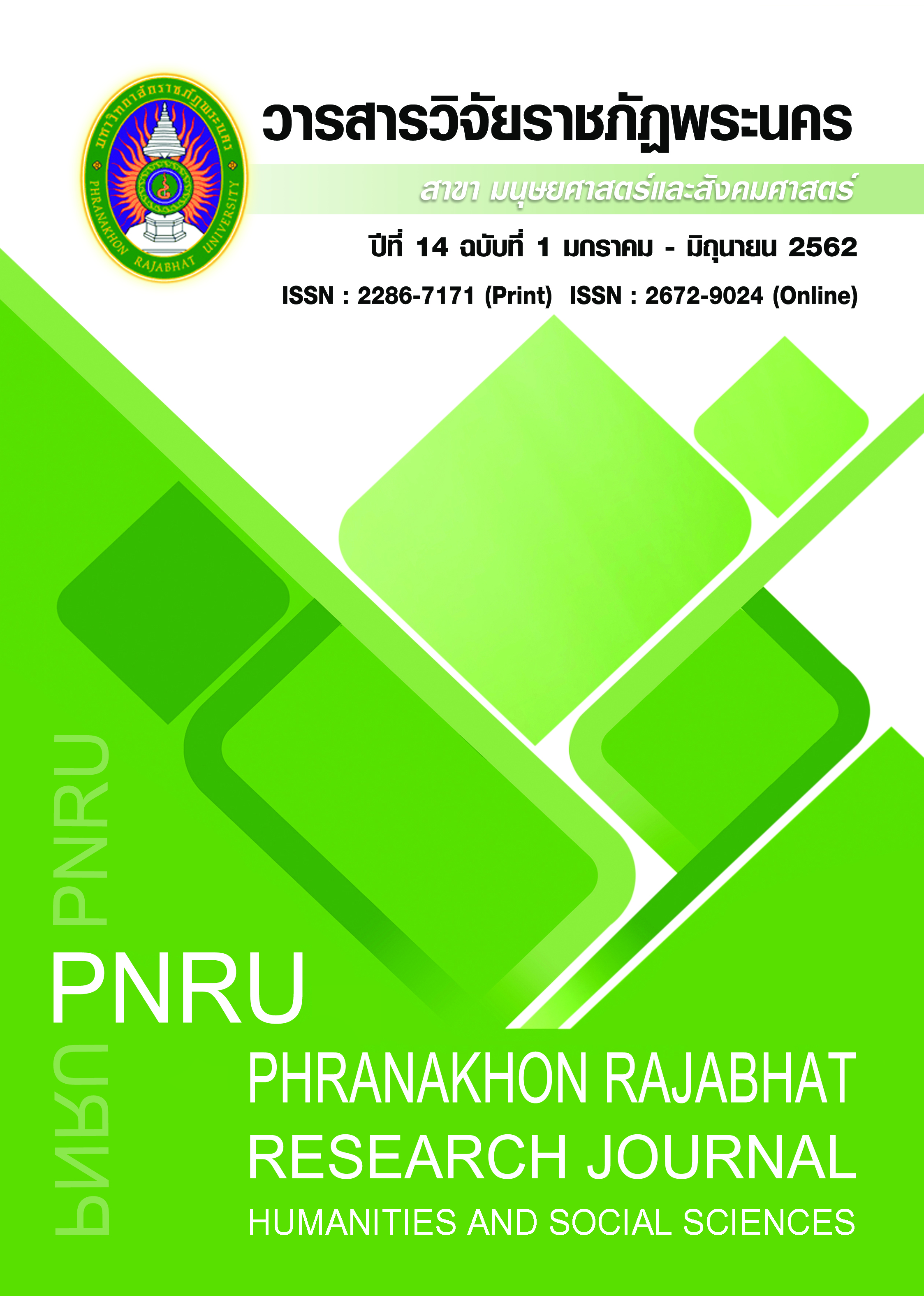การสื่อสารเพื่อสร้างการรับรู้และตระหนักในปัญหาไฟป่าและหมอกควันของประชาชนจังหวัดเชียงราย
Main Article Content
บทคัดย่อ
การวิจัยนี้มีวัตถุประสงค์เพื่อหาแนวทางในการสื่อสารเพื่อสร้างการรับรู้และตระหนักในปัญหาไฟป่าและหมอกควัน โดยเป็นงานวิจัยแบบผสมผสานทั้งเชิงปริมาณและคุณภาพ ผลการวิจัยพบว่า ผู้ตอบแบบสอบถามส่วนใหญ่เป็นเพศชาย คิดเป็นร้อยละ 56.65 อายุอยู่ระหว่าง 46-55 ปี คิดเป็นร้อยละ 23.38 การศึกษาระดับมัธยมศึกษา คิดเป็นร้อยละ 42.39 อาชีพเกษตรกรรม คิดเป็นร้อยละ 57.71 รายได้ต่อเดือนไม่แน่นอน คิดเป็นร้อยละ 50.13 ได้รับข้อมูลข่าวสารเกี่ยวกับไฟป่าและหมอกควันจากเจ้าหน้าที่ของรัฐมากที่สุด คิดเป็นร้อยละ 17.83 รองลงมาคือหอกระจายข่าว แนวทางการสื่อสาร คือ (1) ผู้ส่งสาร ควรเป็นบุคคลที่มาจากทุกภาคส่วนที่เกี่ยวข้อง เน้นการสื่อสารสองทาง ทั้งแบบเป็นทางการและไม่เป็นทางการ และควรเป็นลักษณะการสื่อสารแบบสร้างการมีส่วนร่วม (2) สาร ควรเป็นเนื้อหาของสารที่นำเสนอผลกระทบและการเปลี่ยนวิถีชีวิตที่ยั่งยืน ใช้กลยุทธ์ชี้ให้เห็นอันตรายและพิษภัย ออกแบบเนื้อหาที่เหมาะสมกับกลุ่มเป้าหมายที่แตกต่าง การนำเสนอสื่อตามเนื้อหาที่ควรรู้ในแต่ละช่วงเวลาตลอดปี เพื่อเป็นการย้ำเตือนและสร้างการรับรู้และตระหนักอย่างต่อเนื่อง (3) สื่อ/ช่องทางการสื่อสาร โดยการสื่อสารระหว่างบุคคล ได้แก่ เจ้าหน้าที่ของรัฐ การใช้เทคโนโลยีการสื่อสาร วิทยุกระจายเสียง เสียงตามสาย รถแห่เคลื่อนที่ และคลิปสั้น และ (4) ผู้รับสาร คือคนชุมชน และกลุ่มเด็กและเยาวชน
Article Details
บทความที่ได้รับการตีพิมพ์เป็นลิขสิทธิ์ของมหาวิทยาลัยราชภัฏพระนคร
ข้อความที่ปรากฏในบทความแต่ละเรื่องในวารสารวิจัยราชภัฏพระนครเล่มนี้เป็นความคิดเห็นส่วนตัวของผู้เขียนแต่ละท่านไม่เกี่ยวข้องกับมหาวิทยาลัยราชภัฏพระนคร และคณาจารย์ท่านอื่นๆในมหาวิทยาลัยฯ แต่อย่างใด ความรับผิดชอบองค์ประกอบทั้งหมดของบทความแต่ละเรื่องเป็นของผู้เขียนแต่ละท่าน หากมีความผิดพลาดใดๆ ผู้เขียนแต่ละท่านจะรับผิดชอบบทความของตนเองแต่ผู้เดียว
เอกสารอ้างอิง
Boonchutima, S. & Khotracharee, K. (2016). Risk communication. Bangkok: 21 Century. (in Thai)
Burarak, P. (2018). Communication for stateless people empowerment to legal right. Phranakhon Rajabhat University Research Journal, Humanities and Social Sciences. 13(2), 160-176. (in Thai)
Chiadamrong, B. (2016). Physical activity: knowledge to success. Bangkok: Seuthawan. (in Thai)
Kunpai, K. (2000). Communication Psychology. Bangkok: Rienboon Printing (1998). (in Thai)
Roonkaseam, N. & Sompuech, P. (2018). Community participation in the development of media for community tourism. Journal of Management Science Chiang Rai Rajabhat University. 13(1), 173-191. (in Thai)
Sathapitanonth, P. et al. (2006). Participatory communication and community development: from concept to researches implementation in Thai community. Bangkok: The Thai Research Fund. (in Thai)
Sathawathin, P. (2003). Principle of mass communication. 10th edition. Bangkok: Phappim Limited Partnership. (in Thai)
Sirimongkonlertkun, N, & Pongleerat, S. (2013). Risk areas in incineration based on spatial data in Chiang Rai Province. Bangkok: National Research Council of Thailand. (in Thai)
Yaichid, J., Rewsuwan, W. & Yaichid, P. (2004). Community communication for HIV/AIDS solving in Chiang Rai Province. Bangkok: The Thai Research Fund. (in Thai)


